Saga's first generation made money, and the second generation went crazy. With the backing of Aptos and Jambo, and at a price of only $99, is the Jambo Phone worth buying without thinking? …… Right?
Author: Yobo, Foresight News
On January 11th of this year, Jambo announced the launch of the blockchain phone, Jambo Phone. At the beginning, this hardware device did not cause much of a stir. However, a month later on February 15th, another announcement changed everything. Jambo announced a "collaborative sale" with the Aptos Foundation for this $99 phone, giving it a "golden touch."
Although the first generation of Solana Saga "won" the title of the worst phone of 2023, due to the airdrop value it brought, the phone sold out directly and became a recognized gold shovel. The second generation of Solana Mobile, with its speculative marketing, sold over 60,000 units in just three weeks, even though it is priced at $450 and won't be mass-produced until 2025. In comparison, the Jambo, priced at only $99 and available for immediate delivery, is simply "dirt cheap"… ummm… right?
Adding some background information, Jambo is headquartered in the Congo and its core product is a Web3 portal focused on "Learn & Play & Earn." In 2022, it completed a $7.5 million seed round and a $30 million Series A financing, with investors including top institutions such as Paradigm, Coinbase Ventures, and Pantera Capital. Although Aptos' coin price performance has been slightly weaker than its "direct competitor" Sui in the past six months, its TVL and coin price have shown a strong upward trend in the past month, which coincides with the timing of the collaboration announcements of the two, making it quite delicate.
Here, I'll skip 200 words of the purchasing process (I believe that after you read it, you may not care about this part), and move on to the unboxing and answering some questions about the phone's configuration.
What level of phone is the Jambo Phone?
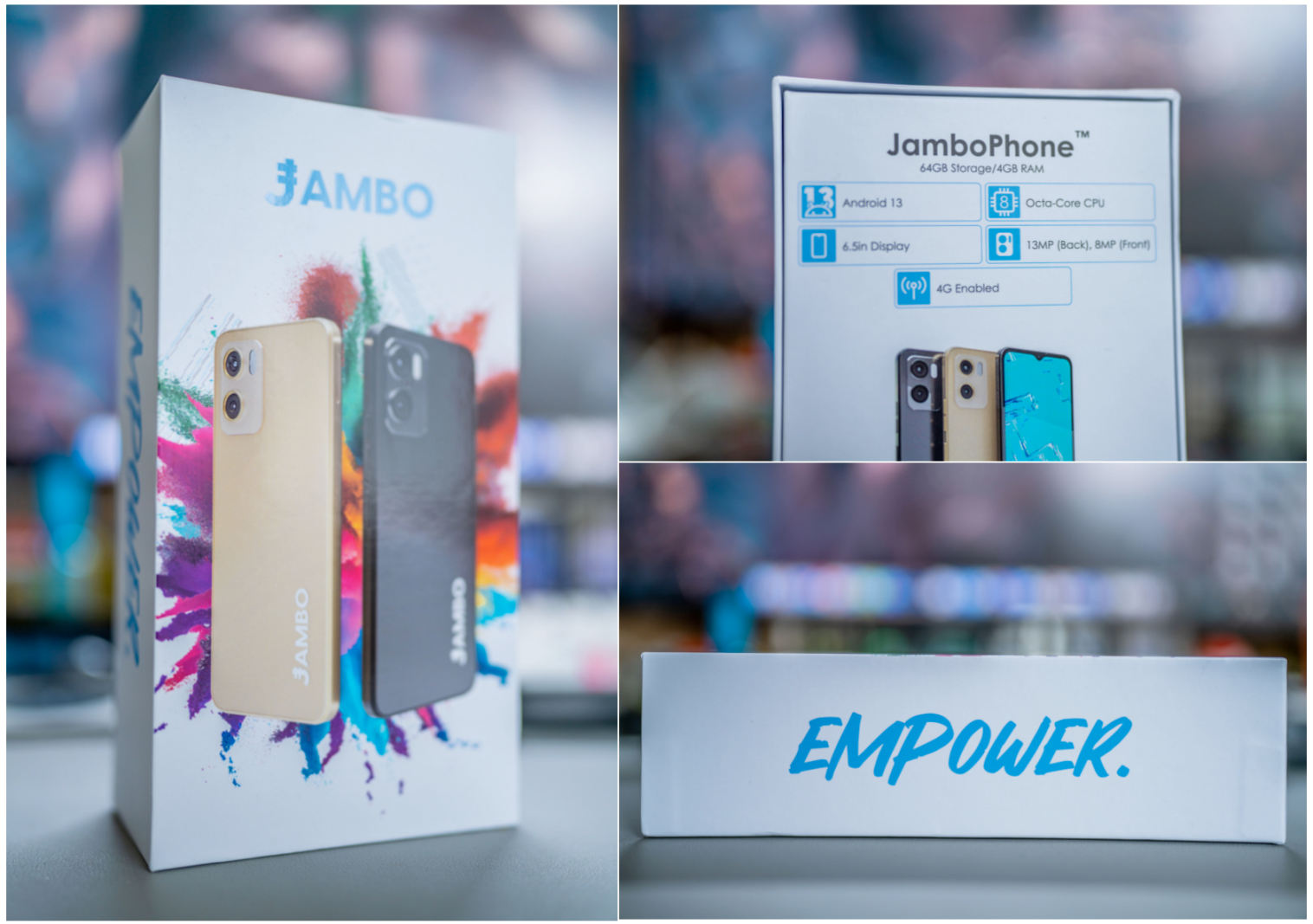
The phone has a decent feel even when not turned on, although the color of the card slot and the inconsistency of the middle frame, as well as the large gap caused by the workmanship, constantly remind you that this phone should be priced at around a hundred dollars, or more precisely, it should not exceed 500 dollars. If you make this mental adjustment in advance, the solid chin on the front should be easier to accept.
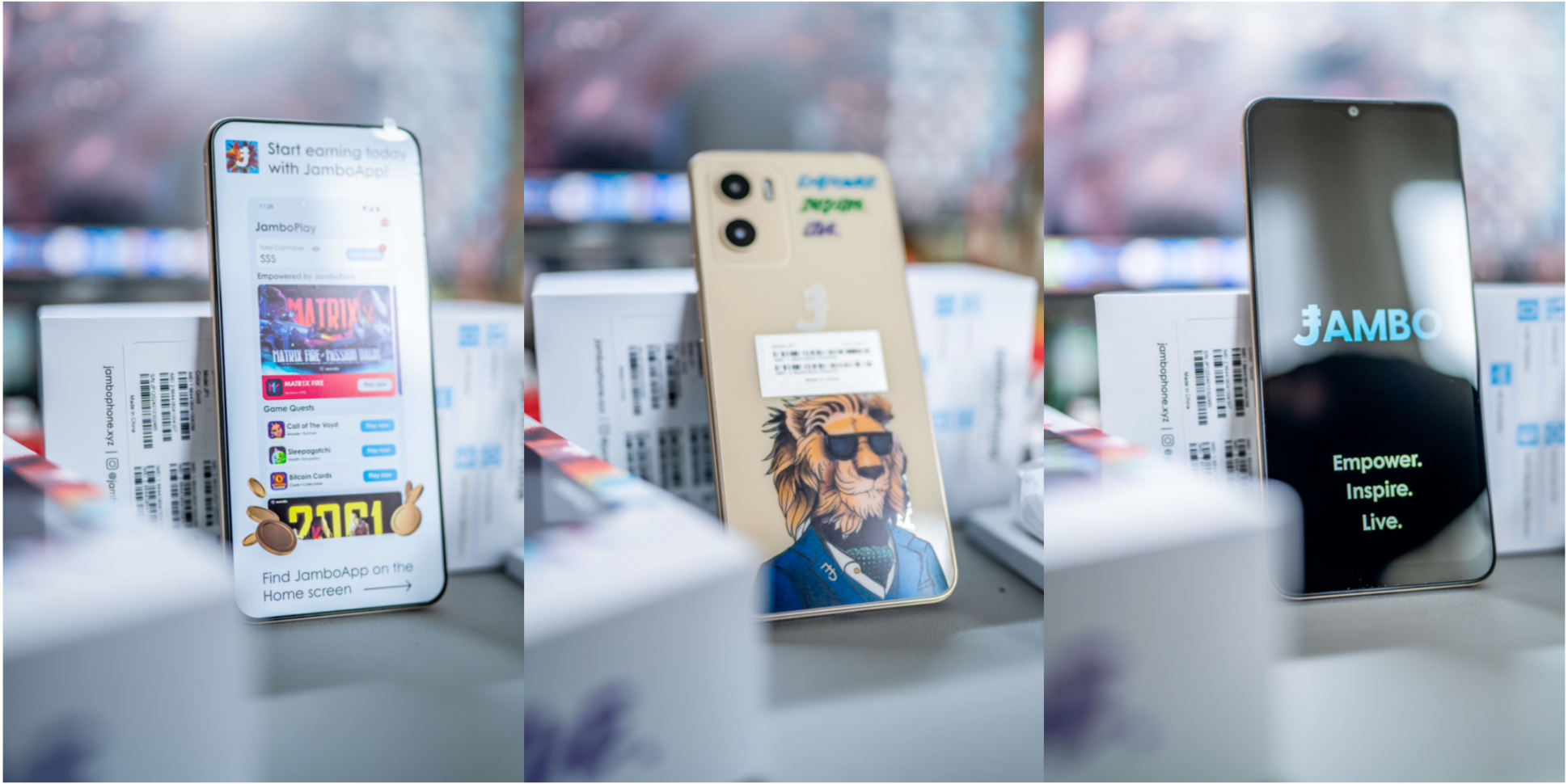
In addition to the main body of the phone, the packaging box also includes an airbag silicone case that costs eight dollars, a very plastic 5V2A charger, and a cable that looks and feels subpar. The fact that it comes with a phone case is worth praising. For this niche model, it would be difficult to get a case if it wasn't included. My Saga is still naked to this day.
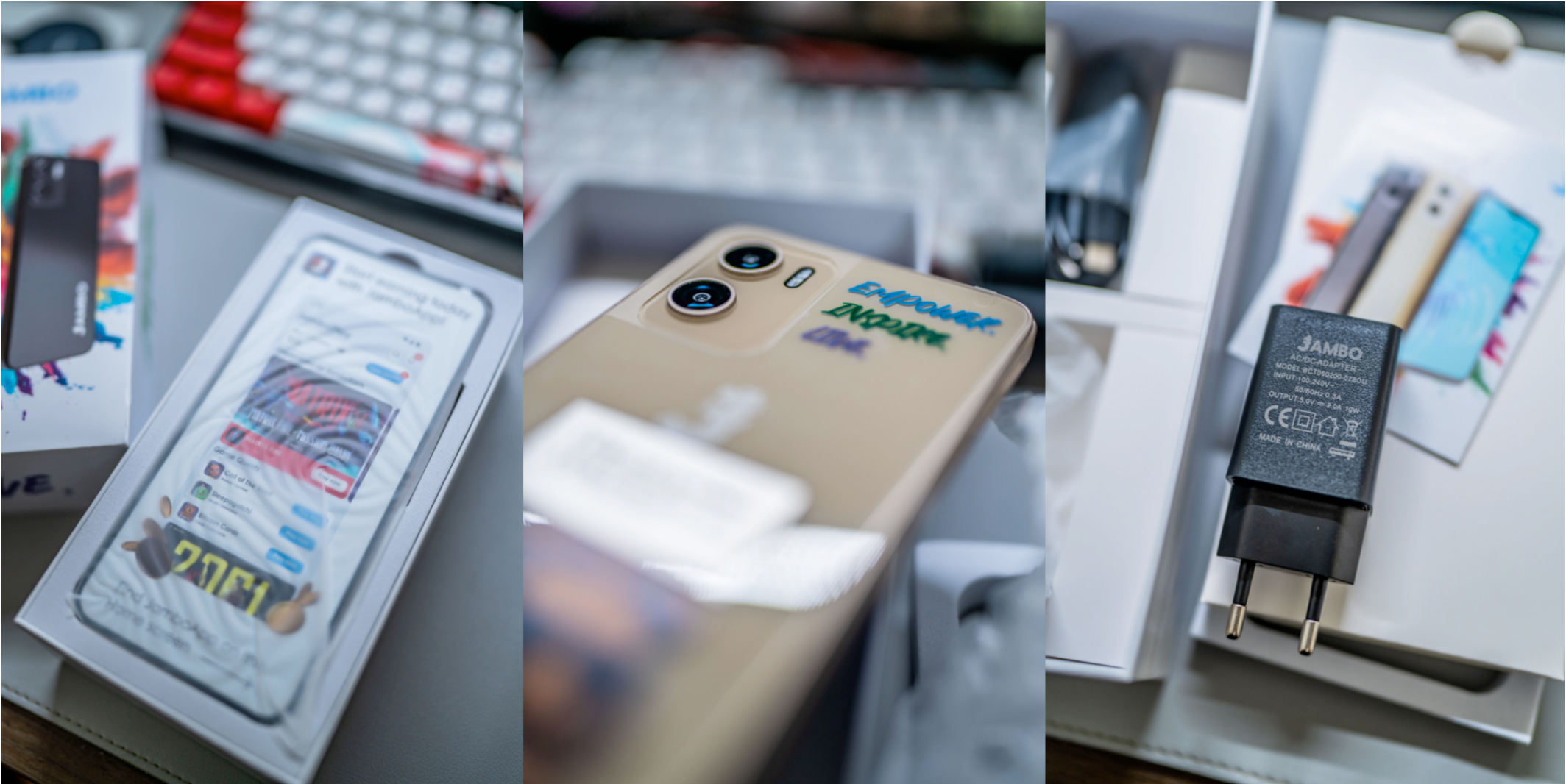
There's not much to say about the system itself. It runs on pure native Android 13, with few pre-installed apps, giving it a bit of a Web3 phone vibe. At least it has the Petra wallet. However, I'll explain this "however" in detail later.
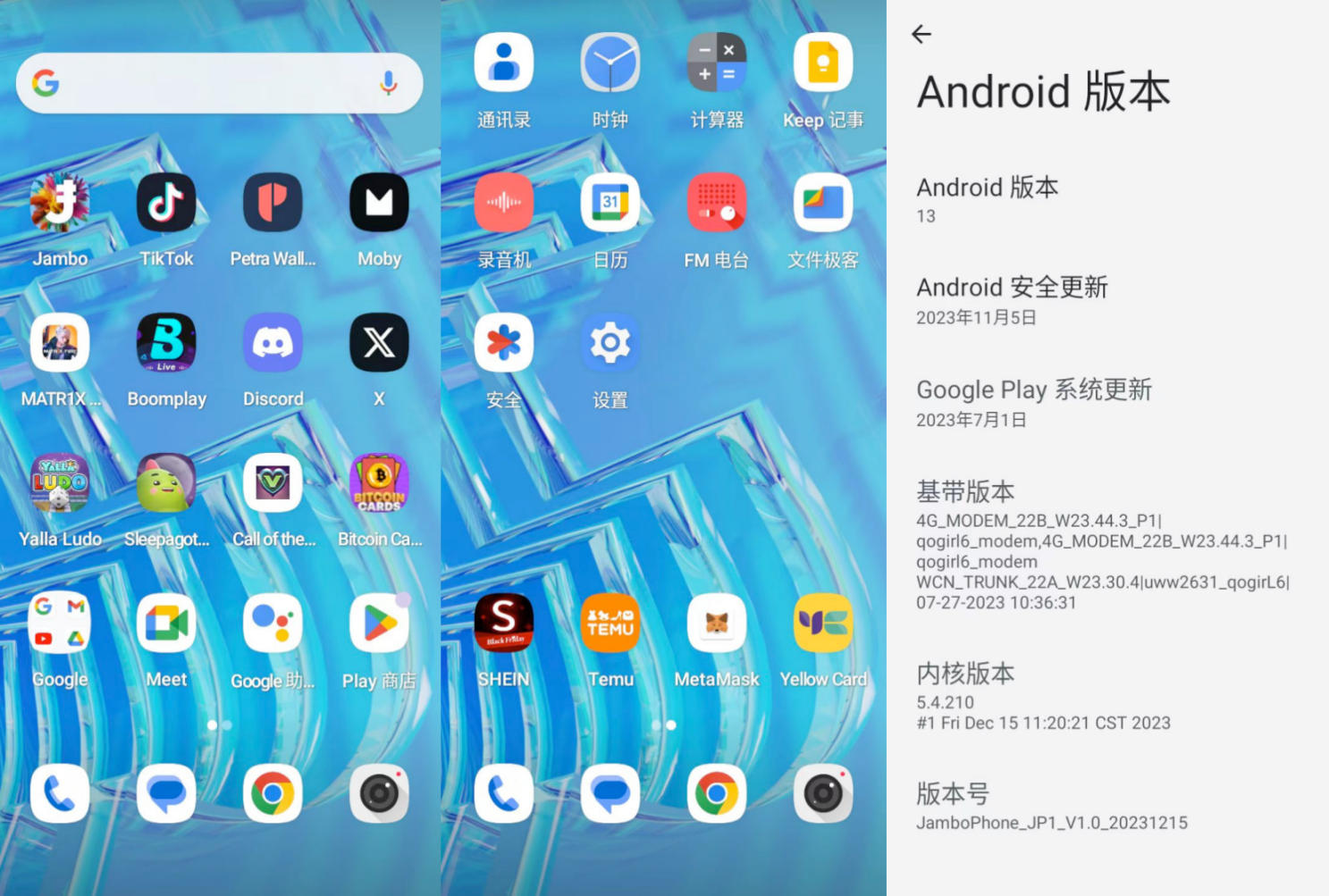
Because there are no specific hardware configuration details in the official promotional materials, I first looked at the specific configuration. It has a Purple Light Rui T606 processor, 4GB of RAM, and 64GB of ROM. If you're not familiar with the T606, it's similar to the Snapdragon 625, which was released in 2016. In 2016, Bitcoin was worth $8,000, and in January of that year, Ethereum finally broke through $1…
Speaking of the T606 chip, it has two A75 big cores and six A55 small cores among its eight cores. The A75 big core was already at the level of small cores in the Snapdragon 690, a mid-range chip released by Qualcomm in 2020. Using a performance level that was barely acceptable eight years ago in today's context is undoubtedly a disaster. After all, in that year, WeChat had just become popular. Now, take a look at how much space WeChat takes up on your phone. 10GB? 30GB?
In terms of specific data, the AnTuTu score is 240,000 (the current flagship Android camp's score has exceeded 2.1 million), the Geekbench6 score is 381 for single-core and 1357 for multi-core, and the 3DMark Wild Life score is 420 with an average frame rate of 2.52. Its main selling point is its benchmark score, and that's about it. For comparison, the Redmi Note12, which was released last year and priced at 800 yuan, uses the Snapdragon 4Gen1, a low-end processor. Its Geekbench6 single-core score is 844, and its multi-core score is 2087. You can do the math for the difference, and as for the gap with flagship phones, it's a bit cruel, so I won't go into that.
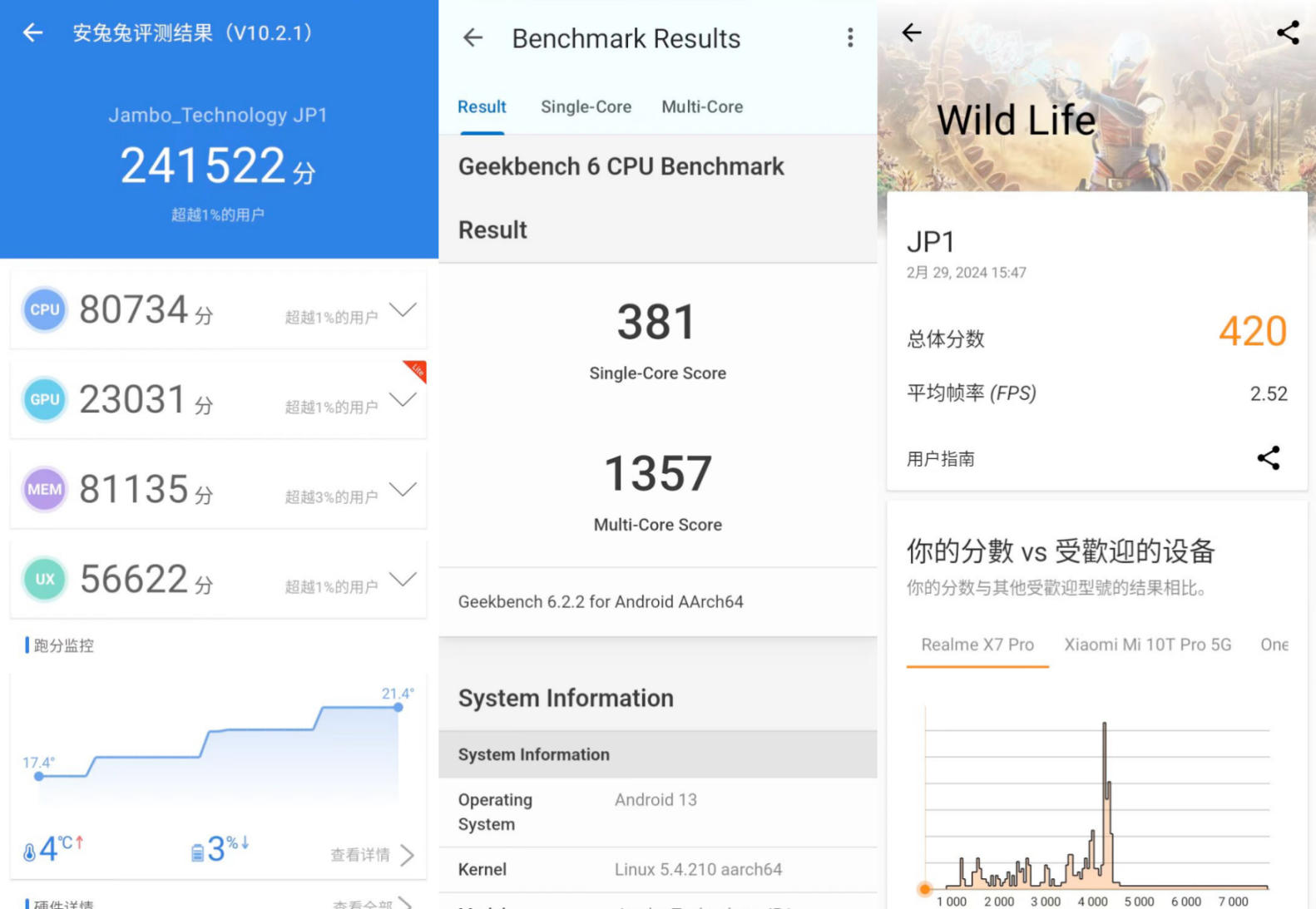
The screen is a 6.52-inch 1600*720 "lit-up" IPS screen with a refresh rate of 60Hz, dull colors, a pixel density of 269 PPI, and LPDDR4x dual-channel memory. It has a dual rear camera, with a 13 million pixel main camera and a 300,000 pixel secondary camera, which is a standard placeholder lens. The battery capacity is 4900mAh, and the battery life is relatively practical. After playing with the phone, testing it, and leaving it idle without doing much, it only lost about 20% of its battery in a whole day. Even my Red Magic 9 Pro, with its monstrous battery, has never had this kind of experience. It seems that as long as the phone is so bad that you don't want to touch it, the battery life can be improved several times (bushi).
So, that should cover most of the hardware situation. While writing the unboxing process, I happened to come across the AGM Z1, a public model product that was launched last year. This phone is similar to the Jambo Phone in many aspects such as the processor and mold, but it has a memory combination of 8+128, supports a 90Hz high refresh rate screen, has a 50 million pixel main camera, and supports side fingerprint unlocking, all of which the Jambo does not have. The price of the AGM Z1 is 599 yuan…
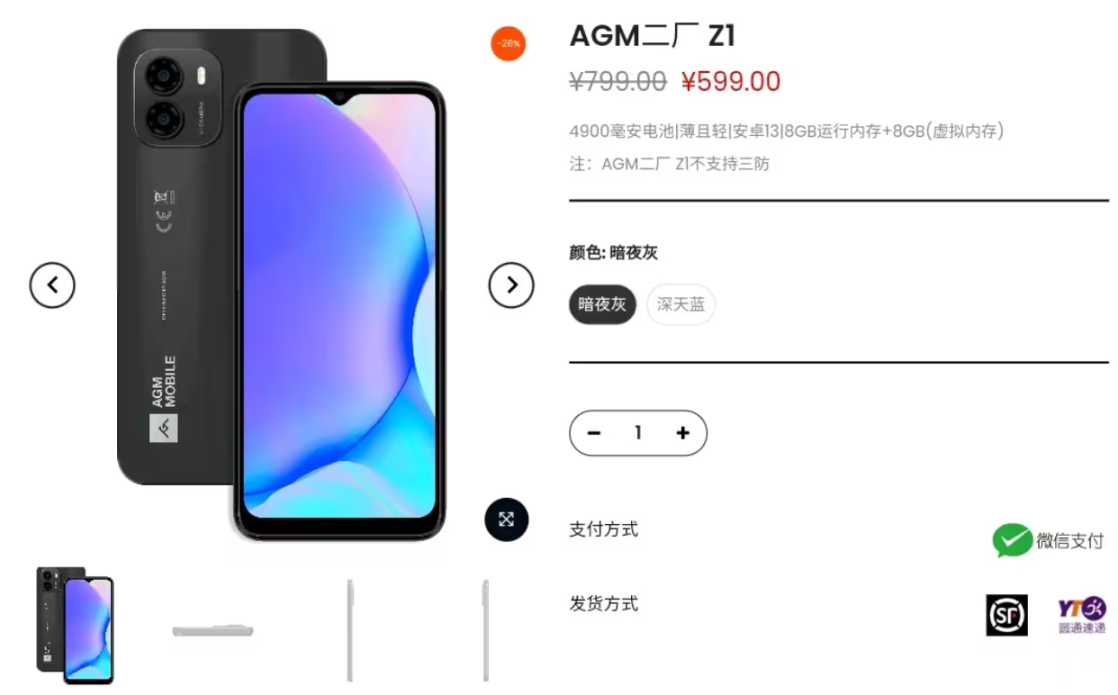
Is the Jambo Phone a "qualified" Web3 phone?
I've covered the "phone" part of this phone, so let's get back to the main topic: Web3, or rather, how high is Aptos' "concentration"?
To give a conclusion first, no matter what level of expectation you have, you may be disappointed.
First of all, the pre-installed apps on the Jambo Phone only include the Petra Wallet, and this version is just a regular Google Play version app without any customization. Additionally, there is no so-called DApp app market on the phone, only the native Google Play store.
Upon first login and creating or importing the Aptos wallet, no "credentials" are sent to the wallet. In simple terms, even if you log into your wallet on this device, it will not generate any identifiable on-chain traces. This is extremely fatal for the so-called "airdrop expectations" because if you have any ordinary Android phone, you can completely download the exact same Petra Wallet app that the Jambo Phone offers.
As for Jambo's "Web3 super app," the wallet initialization in the built-in app version of this phone has always had issues. I have seen more than one person on X platform also report similar problems, and the official response to this issue is still pending. In the limited testable functions, it seems that this version of the Jambo app does not have any customized components and is completely identical to the regular Jambo mobile app.
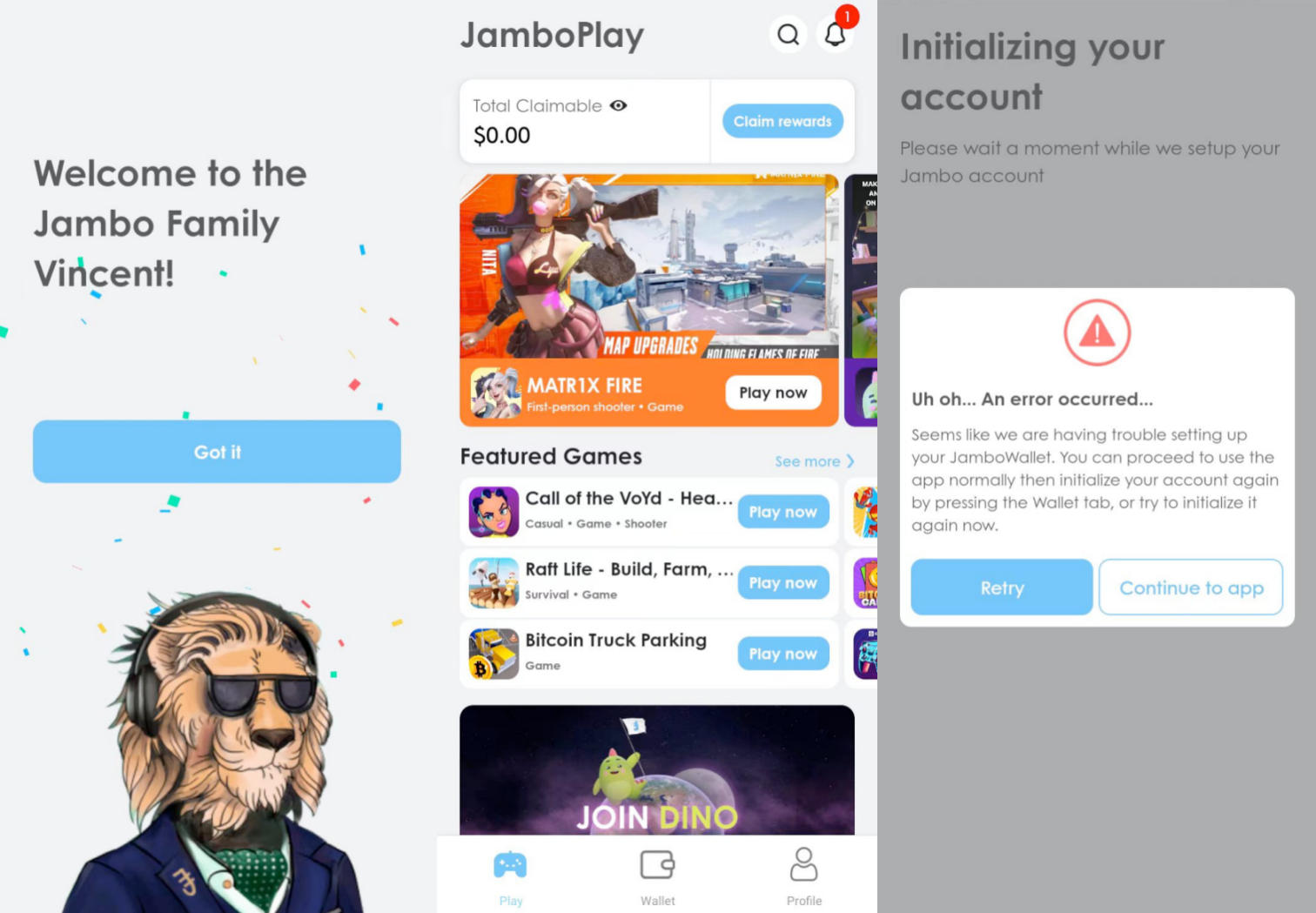
The tasks currently built into Jambo are mainly software downloads, social media followings/likes, which are very Web2 actions. The task verification method still involves submitting screenshots…
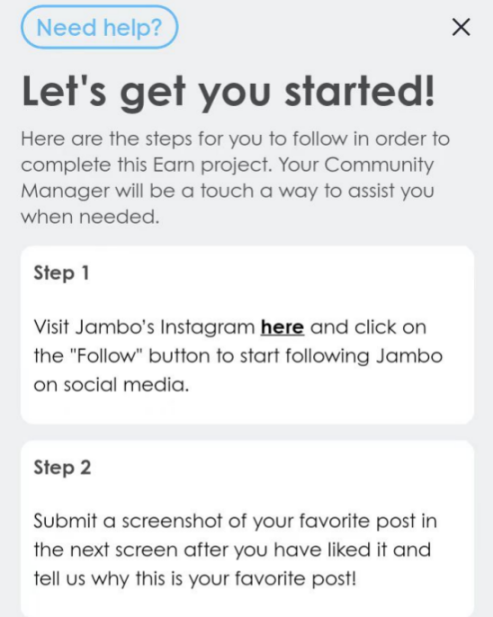
The situation with other built-in apps is also not optimistic. Basically, there are two scenarios: 1. They won't open; 2. They have nothing to do with Web3. Even if they can be used normally, there are no customized components, such as a small fox wallet.
In comparison, Solana Saga will send SBT NFT to the bound Solana wallet address when the device is activated, which is the most important on-chain proof for subsequent airdrops. In addition, the phone has a customized DApp app market embedded, and directly integrates a seed library at the system level, providing a system-level interactive experience for the wallet. SBT NFT holders can be directly used as airdrop judgment conditions. Furthermore, the customized DApp app market means that Saga users can download custom apps developed for the project, and both Bonk and Chonky airdrops are distributed through this method.
In short, at this point in time and with the current system version, there is really no "airdrop potential" for the Jambo Phone.
The only possibility lies in hoping for major system updates in the future, where the Jambo and Aptos teams can truly create some customized apps. However, whether this hope will come true is a huge question mark.
Conclusion
Solana Mobile Saga is not actually the first Web3 concept phone, but previous Web3 phones released by HTC and Vertu were not successful. It's just that the outstanding performance of the Solana ecosystem in the past six months and the innovative gameplay design of Solana Mobile have elevated Saga to a level far beyond the hardware value of the phone itself.
However, this seemingly not too complicated and easily replicable matter has been proven by Jambo to be something not everyone can do well. It is believed that we will see more so-called Web3 phones in the future, and whether these devices can also become gold shovels and whether they are sufficient to receive the premium of Web3 is clearly not an absolute "YES."
Lastly, let's hope that Jambo and the Aptos Foundation can provide more empowerment in the future updates of the Jambo Phone, otherwise this terrible phone will only serve as a "warning bell" sitting in the cabinet.
免责声明:本文章仅代表作者个人观点,不代表本平台的立场和观点。本文章仅供信息分享,不构成对任何人的任何投资建议。用户与作者之间的任何争议,与本平台无关。如网页中刊载的文章或图片涉及侵权,请提供相关的权利证明和身份证明发送邮件到support@aicoin.com,本平台相关工作人员将会进行核查。




